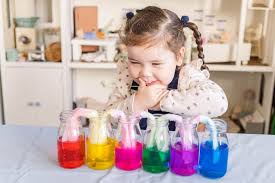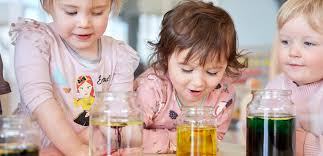Introduction and Importance in Facilitating Creativity
Science is a fantastic way to ignite creativity in young children by encouraging them to explore, ask questions, and test out ideas. It’s all about discovering the world around them, and when children get to experiment with hands-on activities like watching plants grow, mixing substances, or observing the weather they’re engaging with the world in a creative way. As Wilson (2003) highlights, scientific thinking is a powerful tool for fostering curiosity and imagination. Children learn by investigating, predicting, and exploring outcomes, all of which nurture their creativity. Not only does science help children understand the world, but it also encourages them to think critically and come up with creative solutions to the questions they raise.
Creativity Theories and Perspectives
Creativity in science is all about hands-on learning and figuring things out by trial and error. Piaget (2013) pointed out that kids learn best when they’re actively engaged in exploring their environment, and science is a perfect fit for this. Children test ideas, make predictions, and see what works, which helps them develop problem-solving skills. Vygotsky’s theory, which stresses the role of social interaction in learning, also fits with science education when kids collaborate, they can share ideas, experiment together, and learn from each other’s creative approaches (Vygotsky, 2020). Wilson (2003) suggests that when kids work together on science projects, it encourages them to refine their ideas, helping their creative thinking grow.

Resources, Materials, and Digital Technologies
In the science classroom, it’s all about using materials that spark curiosity. Simple items like magnifying glasses, measuring cups, and natural objects (such as leaves or rocks) are great tools for children to explore. Zabawa (2019) emphasizes that sensory-rich science activities really help deepen their understanding. But technology can also play a key role! Digital tools, like Science Journal by Google, help children document their observations and test out their ideas in a more interactive way. Using apps and virtual labs gives kids the chance to experiment and analyze, bringing new and exciting ways to learn (NAEYC, n.d.).
Learning Experiences
0–2 years: Children can explore natural objects like leaves or stones, sparking sensory play and early scientific inquiry (Wilson, 2003).
2–3 years: Toddlers engage in water play, learning about cause and effect through pouring and mixing (Piaget, 2013).
3–5 years: Children plant seeds and observe their growth over time, learning about life cycles and responsibility (Howard & Mayesky, 2022).
6–8 years: Children conduct a simple volcano experiment with baking soda and vinegar, exploring chemical reactions and testing their hypotheses (Zabawa, 2019).
Critical Reflection and Evaluation
The water play for toddlers (2–3 years) was fantastic for sparking their curiosity about cause and effect. However, the messiness of water play sometimes made it harder for the kids to stay focused. Next time, I’ll plan a more controlled setup to keep the focus on the learning. The volcano experiment for older kids (6–8 years) was a big hit, but I realized some kids didn’t fully understand the scientific concept behind the eruption. In future lessons, I’ll spend more time explaining what’s going to happen and why, and give the kids a chance to guess before they see the reaction. This way, they’ll be more engaged and feel like active participants in the scientific process.

